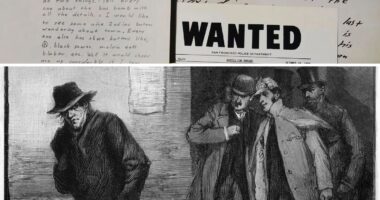Ganesha is one of the most worshipped deities in the Hindu pantheon. The devotion towards Ganesha widely extends to Buddhists and Jains and also in Sri Lanka, Nepal, Philippines, Singapore, Thailand, Indonesia, Malaysia, and Bangladesh. Even though he has several attributes, he is identified by his elephant head. He is specifically revered as the remover of hindrances and thought to bring good luck, deva of wisdom and intellect, and the patron of sciences and arts. Ganesha as the god of beginnings in Hindu mythology is honored at the initiation of ceremonies and rites. He is also invoked as a patron of learning and letters during writing sessions. The principal texts on Ganesha include the Mudgala Purana, the Ganesha Purana, and the Ganapati Atharvasirsha.
Ganesha | God of Beginnings in Hindu Mythology
Etymology
The term ‘Ganesha’ derives from Sanskrit – the words Gana means a “group” and isha means “lord or master.” Gana is referred to the multitude of semi-divine beings that develop part of the retinue of Ganesha’s father, Shiva. The earliest mention of ‘Ganapati’ is found in hymn 2.23.1 of the Rigveda (2nd-millennium BCE). An early Sanskrit lexicon named Amarakosha lists eight synonyms of Ganesha: Ganadhipa, Heramba, Vinayaka, Lambodara, Gajanana, Vighnaraja, Dvaimatura, and Ekadanta.

In Buddhist Tantras and the Puranas, Ganesha was commonly referred to as Vinayaka or Binayaka. The names Vigneshvara (Lord of Obstacles) and Vighnesha refer to his significant function in Hinduism as the meaning suggests. A prominent name for Ganesha in the Tamil language is Pillaiyar or Pillai. There is a difference between these two names according to A.K. Narain; Pillaiyar means a “noble child” and Pillai means a “child”. The words pallu, pella, and pell in the Dravidian family of languages denote “tooth or tusk”. In Thailand, Ganesha is commonly known as Phra Phikanet. He is known as Maha Peinne in the Burmese language. In the Singhala Buddhist areas of Sri Lanka, he is known as Gana deviyo.
Attributes of Lord Ganesha
He has been portrayed with the head of an elephant since the earlier times of his appearance in the Indian art form. There are several conjectures to this. According to some texts he was born with an elephant head and others say he acquires it later. Heramba-Ganapati, one of Ganesha’s popular forms has five elephant heads. The most recurrent story is that he was created by goddess Parvati with clay to protect her. Lord Shiva beheaded him when he came in between Shiva and Parvati. Ganesha’s head was then replaced with that of an elephant. According to another story, Ganesha was created by Lord Shiva’s laughter. Lord Shiva found him so alluring that he gave him a protruding belly and an elephant head.

Ganapati’s earliest name was Ekdanta indicating the one tusk. His number of arms varies. His popular forms have between two and sixteen arms. In the 9th and 10th centuries, the form with 14 and 20 arms appeared in Central India. One common feature is the serpent. According to the Ganesha Purana, he wrapped Vasuki, the serpent around his neck. A distinct form of Ganesha is also known as Balachandra (moon on the forehead) signifying the tilaka, also marked as a crescent moon on the forehead.
Vahanas
Ganesha uses a mouse (shrew) as a mount in five out of the eight incarnations as described in the Mudgala Purana. He uses a divine serpent Shesha as Vighnaraja, a lion as Vakratunda and Mohotkata, a horse as Dhumraketu, and a peacock as Mayuresvara and Vikate. According to Jain depictions, Ganesha has several vahana such as a mouse, elephant, ram or peacock, and tortoise. The most popular vahana of Ganesha is the mouse, shrew, or rat. According to Martin Dubost, during the 7th century, the rat began to appear as the primary mount or vehicle in sculptures of Ganesha in western and central India.
Features of Lord Ganesha
Ganesha is widely worshipped as the remover of obstructions – Vighneshvara, Vighnaraja, or Vighnaharta. Paul Courtright states the dharma of Ganesha is to remove and create obstacles. Dhavalikar states the quick ascension of Ganesha in the Hindu pantheon, and the appearance of the Ganapatyas, to this alters in emphasis from Vighnakarta (creator of obstacle) to Vighnaharta (averter of obstacle). The Sanskrit term buddhi is closely associated with Ganesha, especially in the Puranas there are several stories of his cleverness and love of intellect. In Ganesha Purana and the Ganesha Sahasranama, Ganesha’s name is Buddhipriya. According to Kundalini yoga, Ganesha resides in the first chakra known as Muladhara. This chakra is the principle on which the manifestation of primeval Divine Force rests. Mula means “original” and adhara means “foundation or base.”

Worship and Festivals
Lord Ganesha is worshipped on several secular occasions, especially at the beginning of ventures such as starting a business or buying a vehicle. His devotees believe that Ganesha grants success, affluence, and safety against misfortune. Musicians and dancers, especially in the Southern part of India, begin their performances with a prayer to Ganapati. People offer sweets such as laddus and modaka. Due to his identification with red color, he is often worshipped with red flowers and red sandalwood paste. Cynodon dactylon (Durva grass) and other materials are used in Ganesha’s worship. In the month of Bhadrapada (August/September) in the suklapaksha (the fourth day of the waxing moon) devotees celebrate Ganesh Chaturthi. They celebrate Ganesh Jayanti on suklapaksha in the month of Magha (January/ February).
Also Read: Yama | Yamraj God of Death In Hindu Mythology



